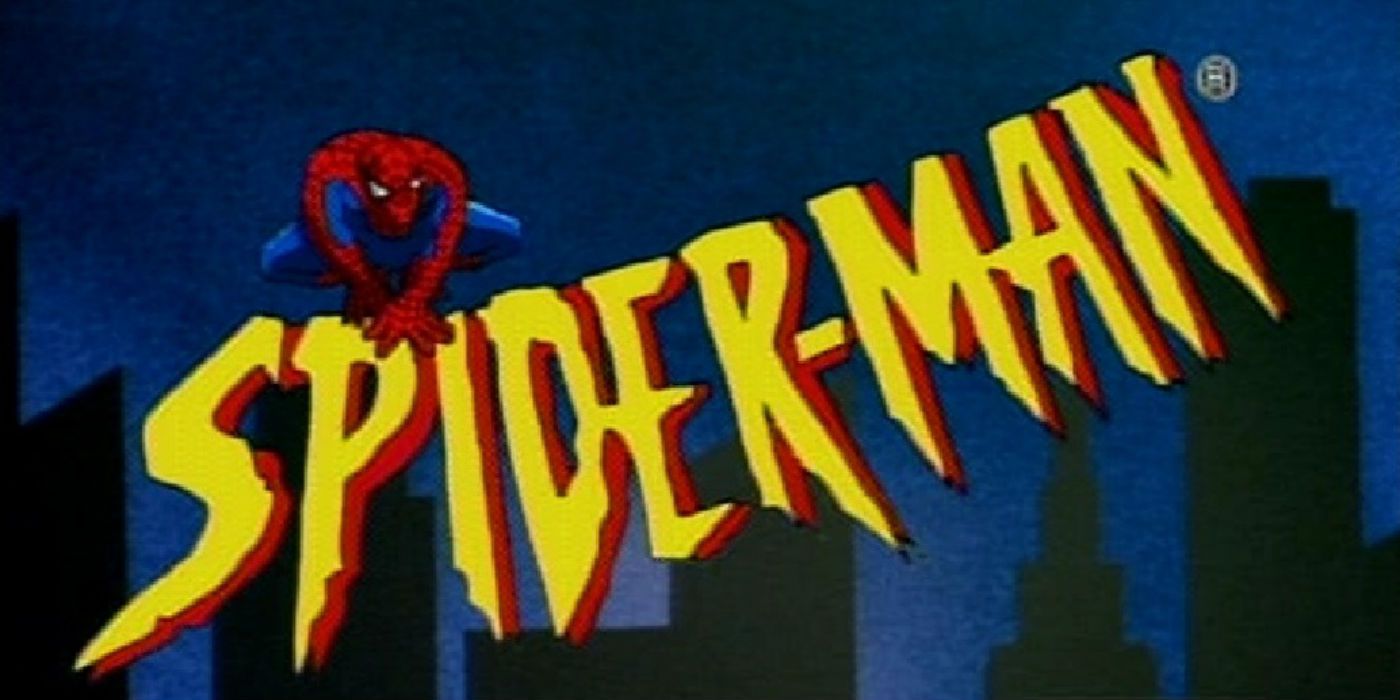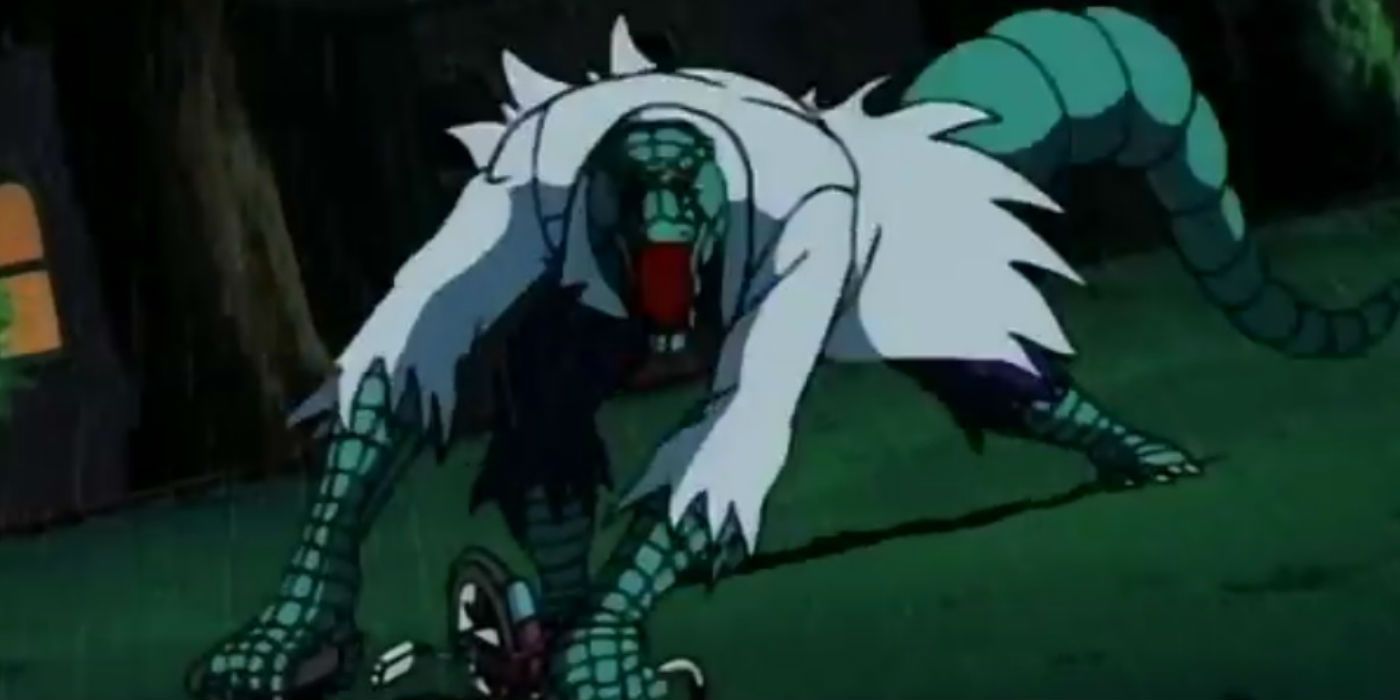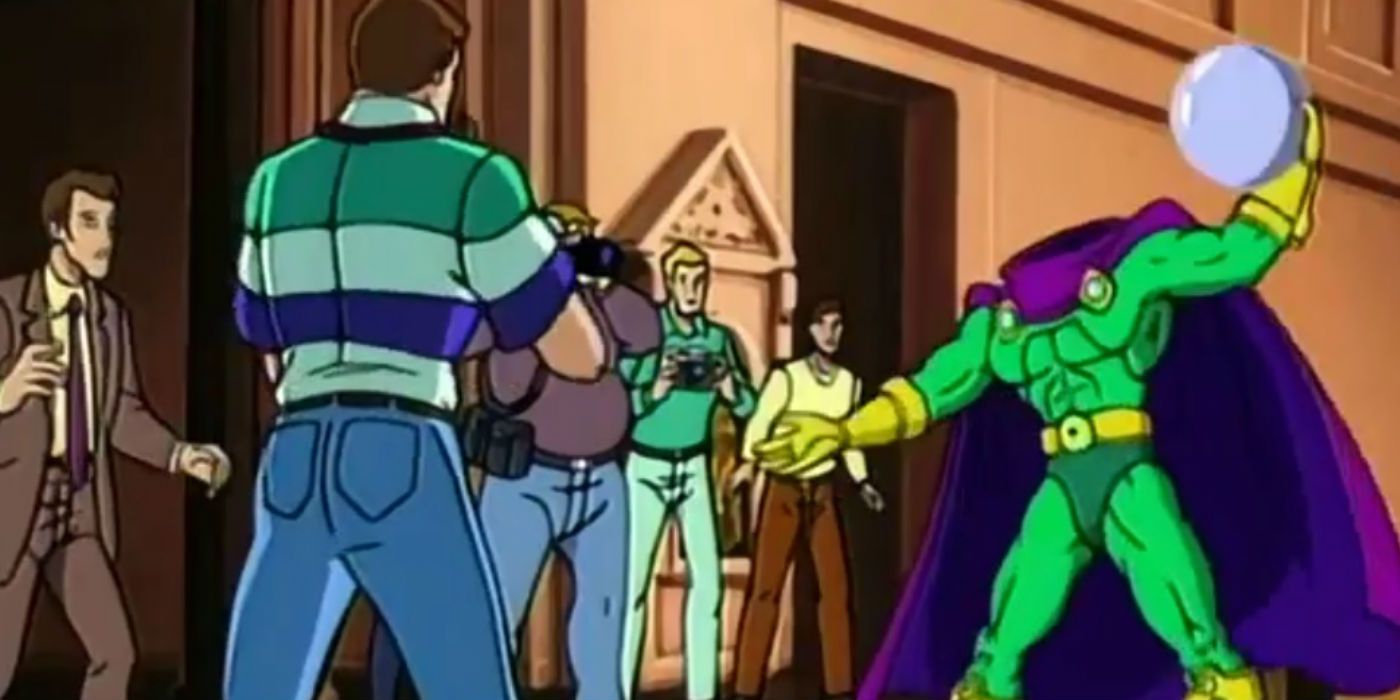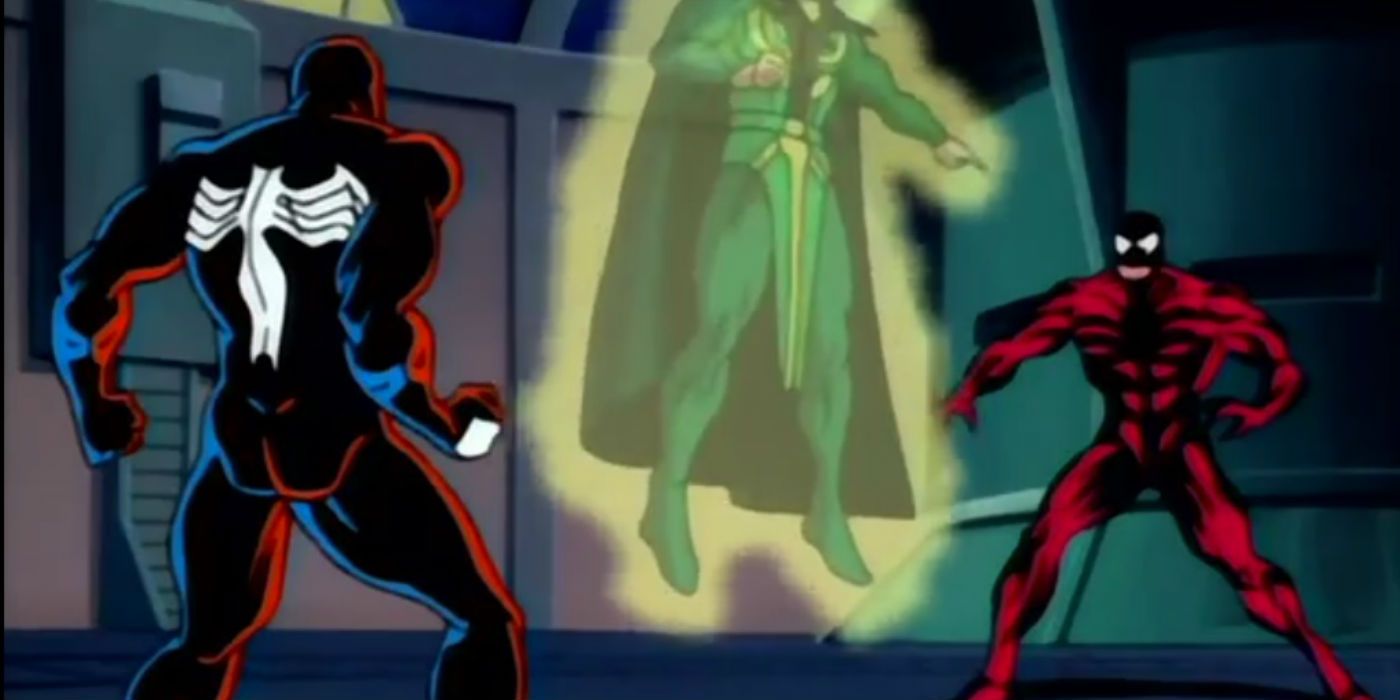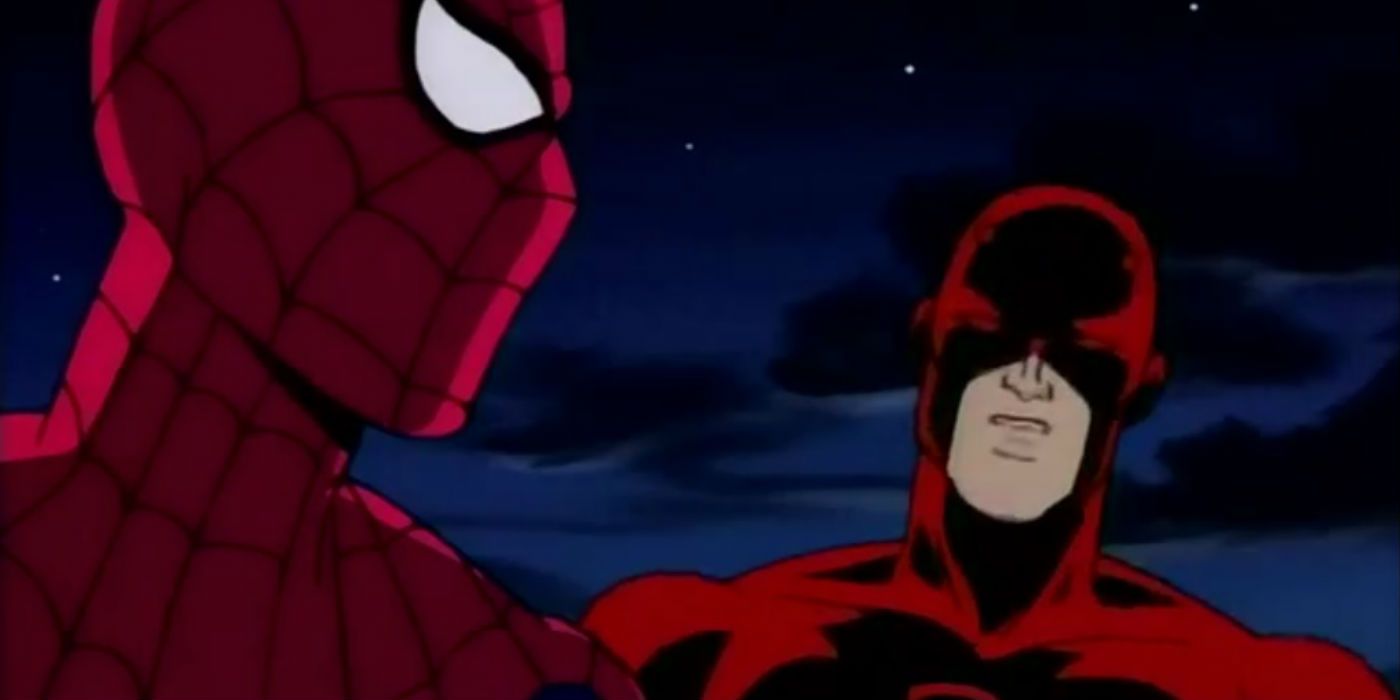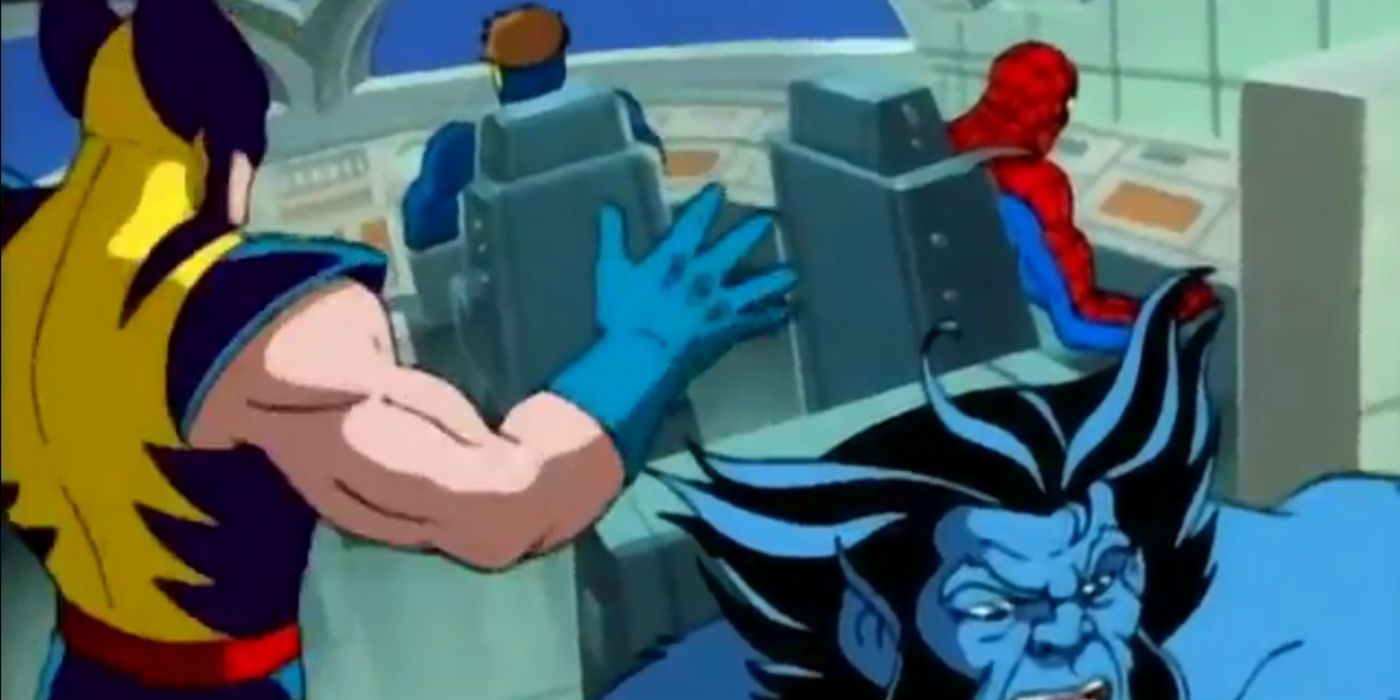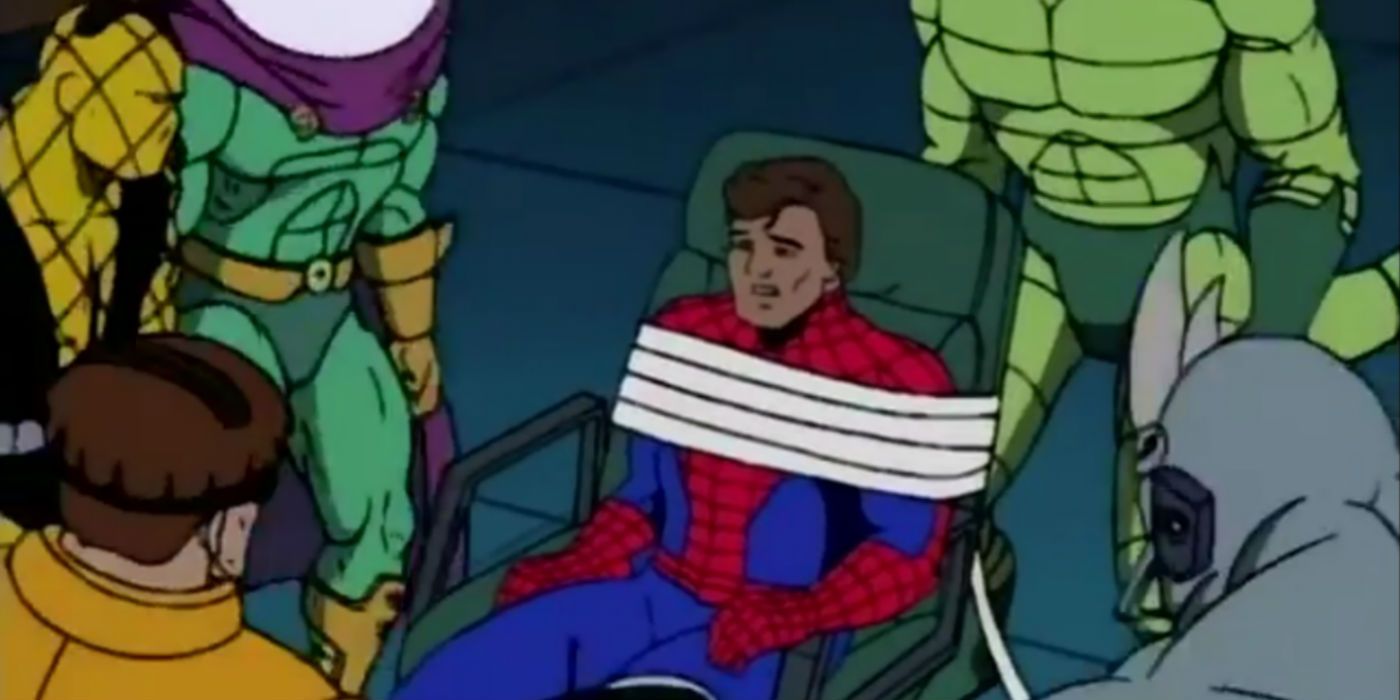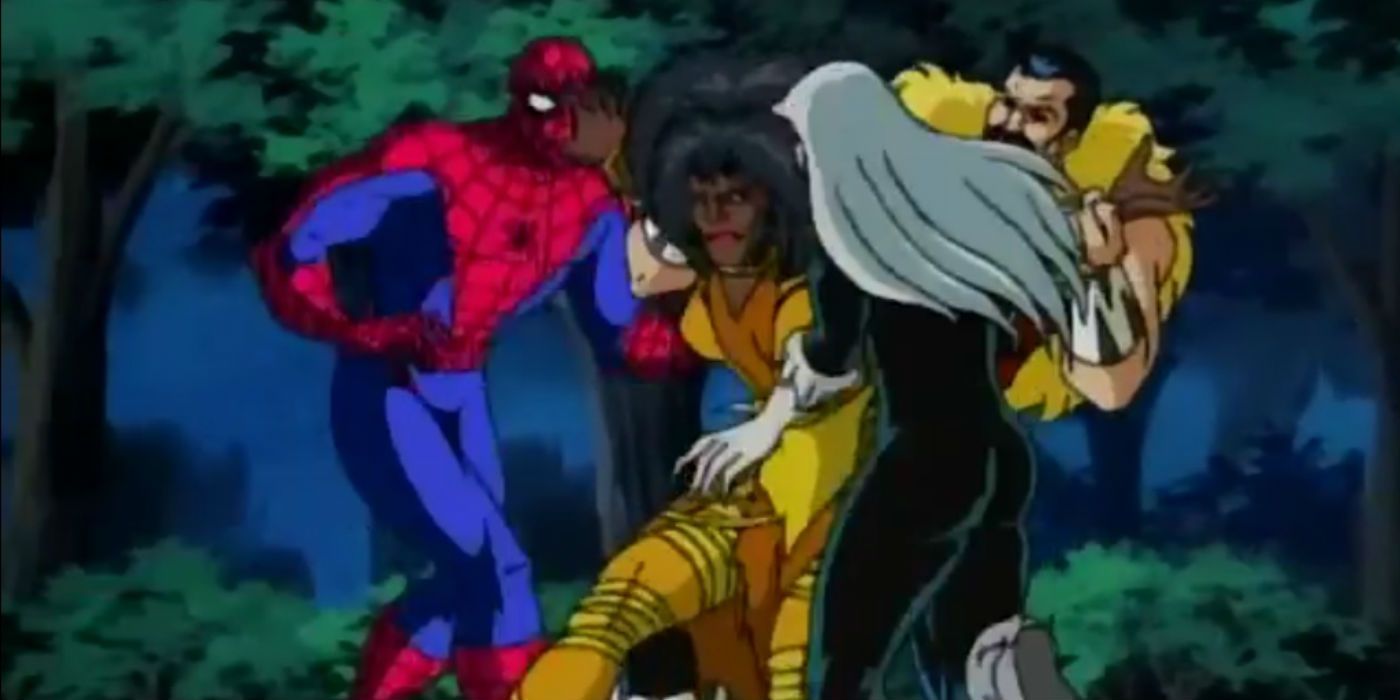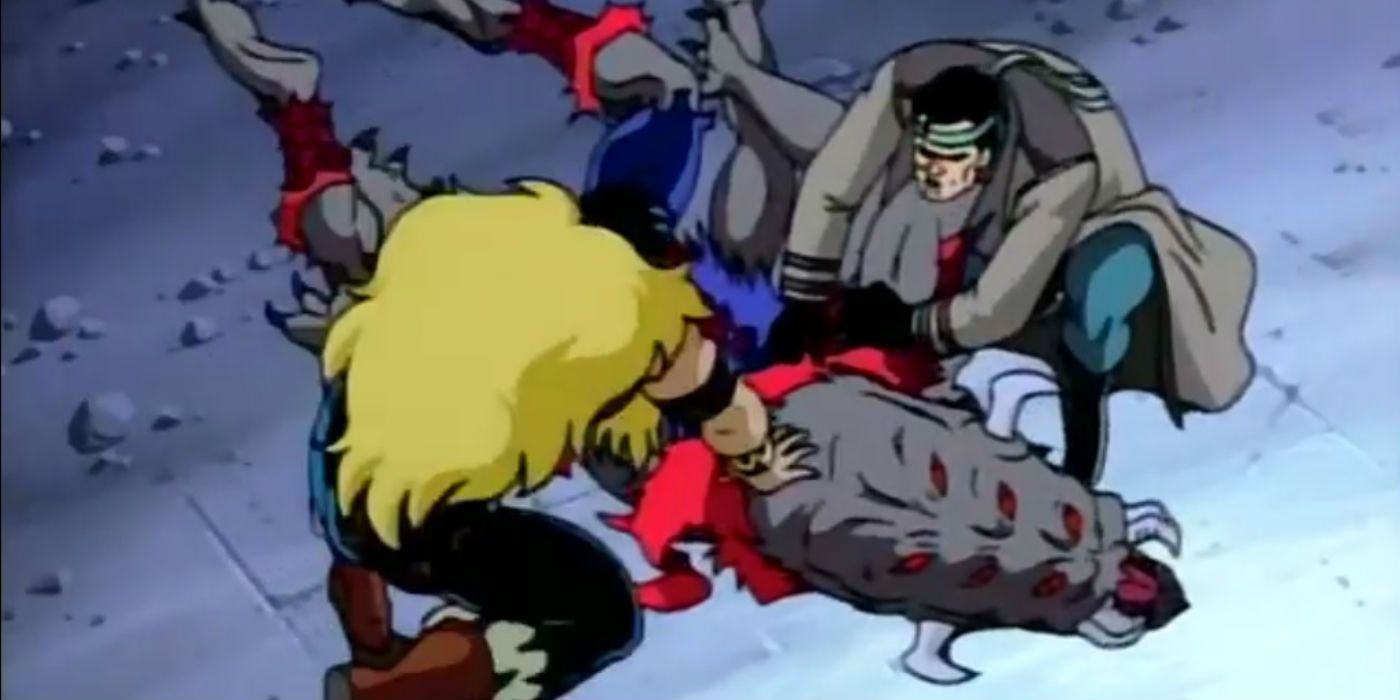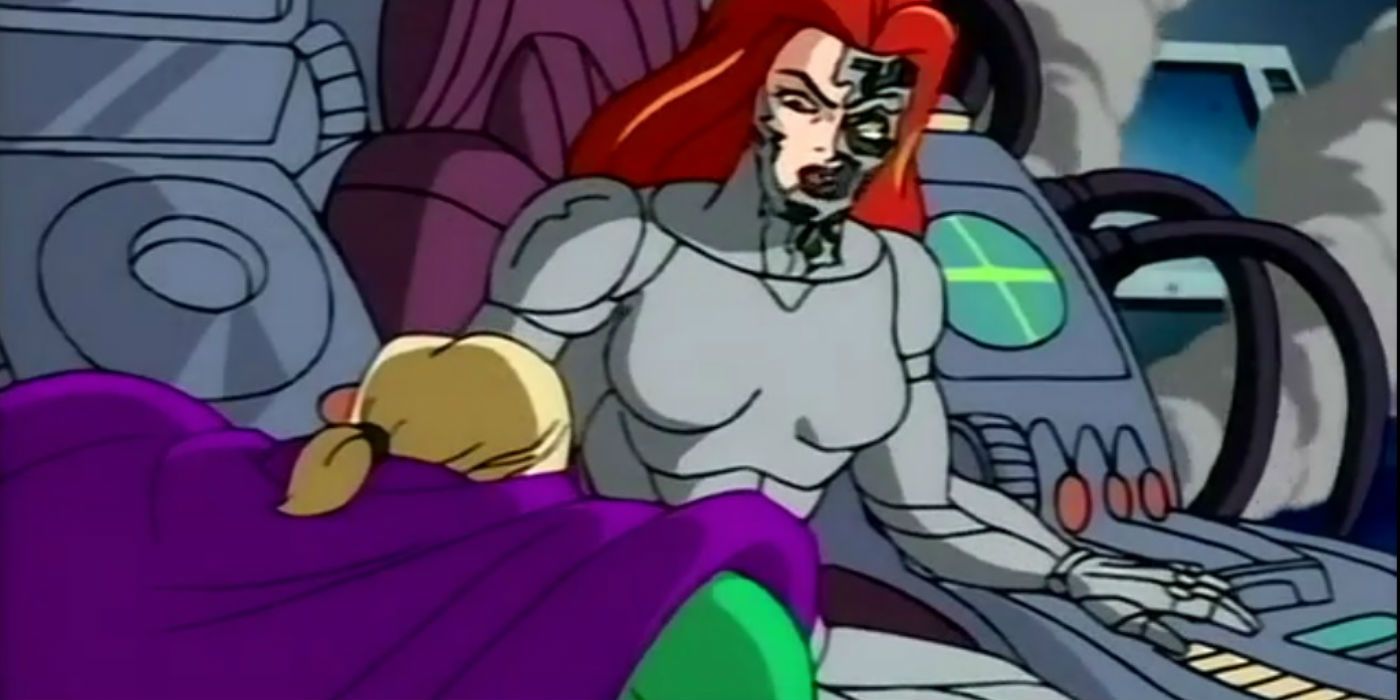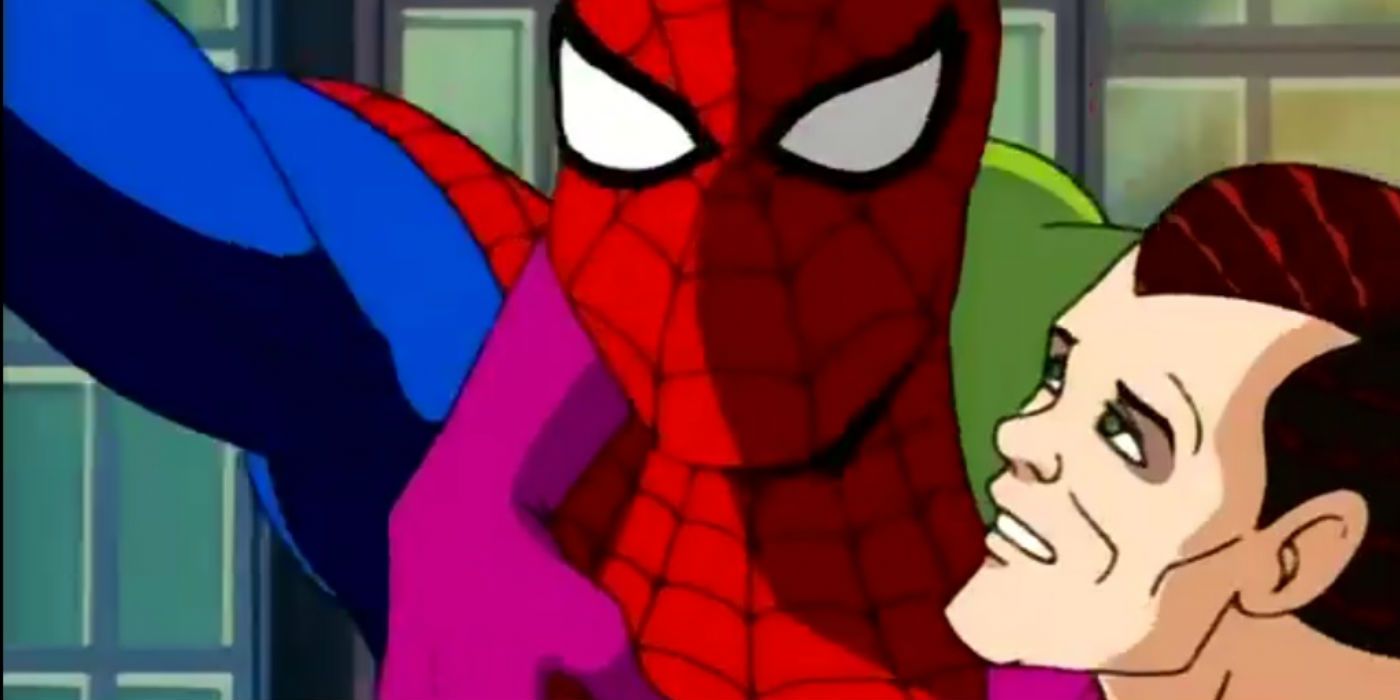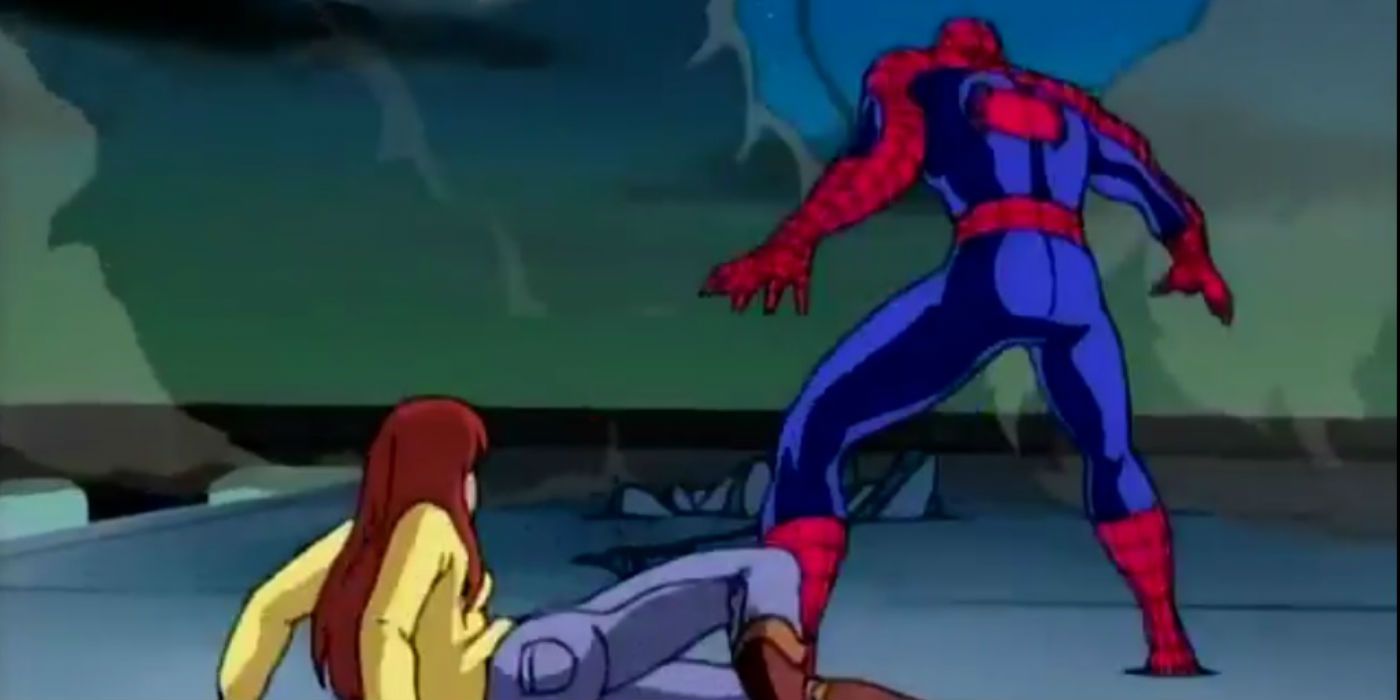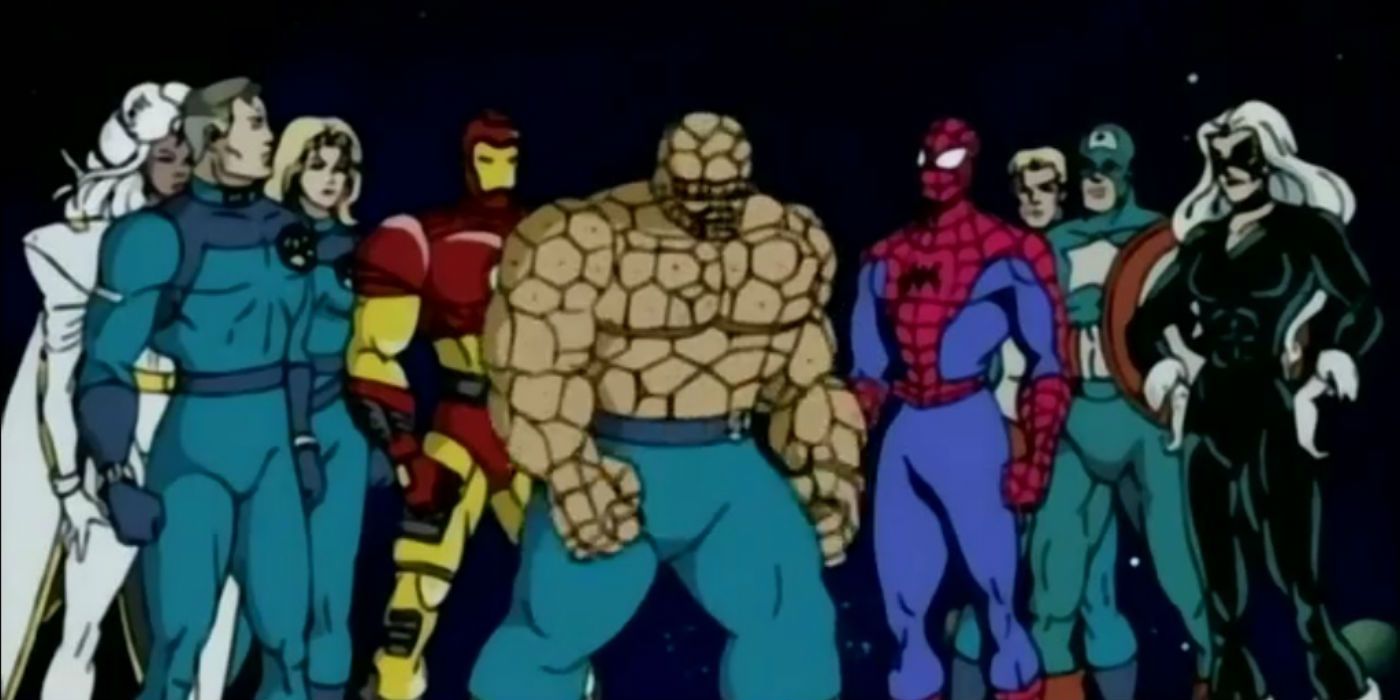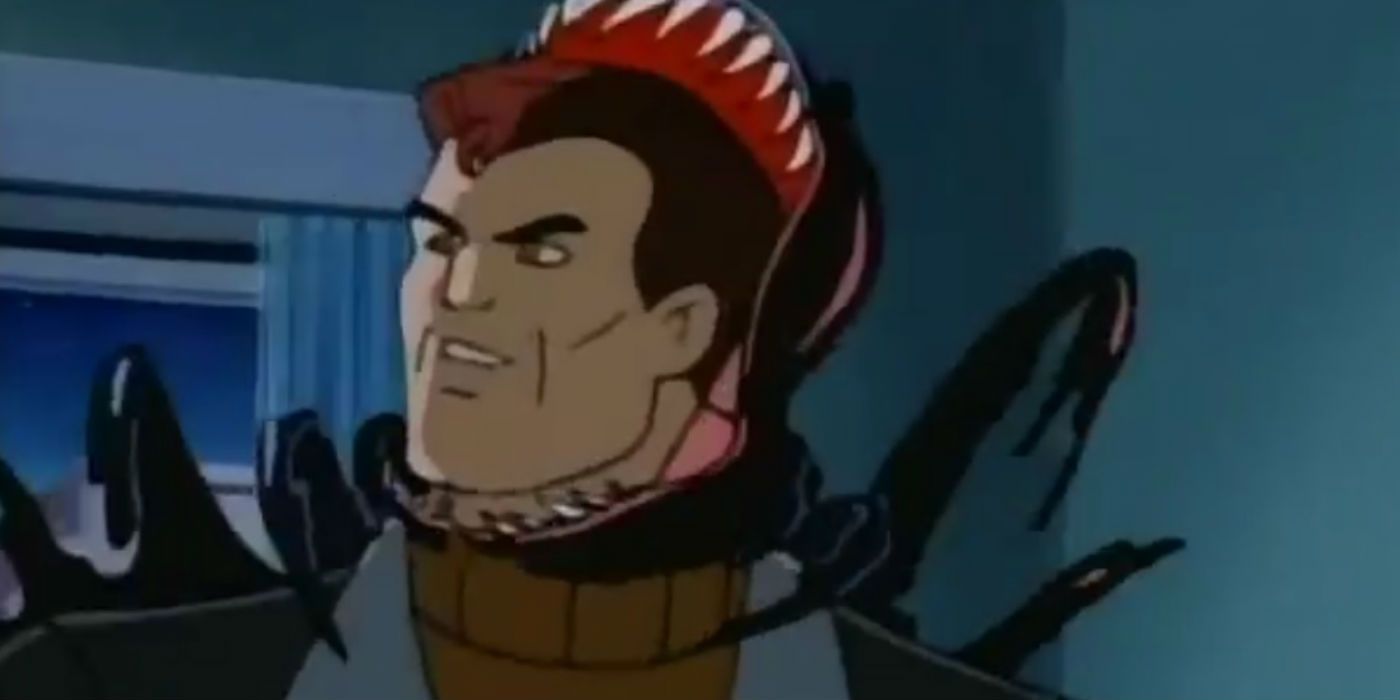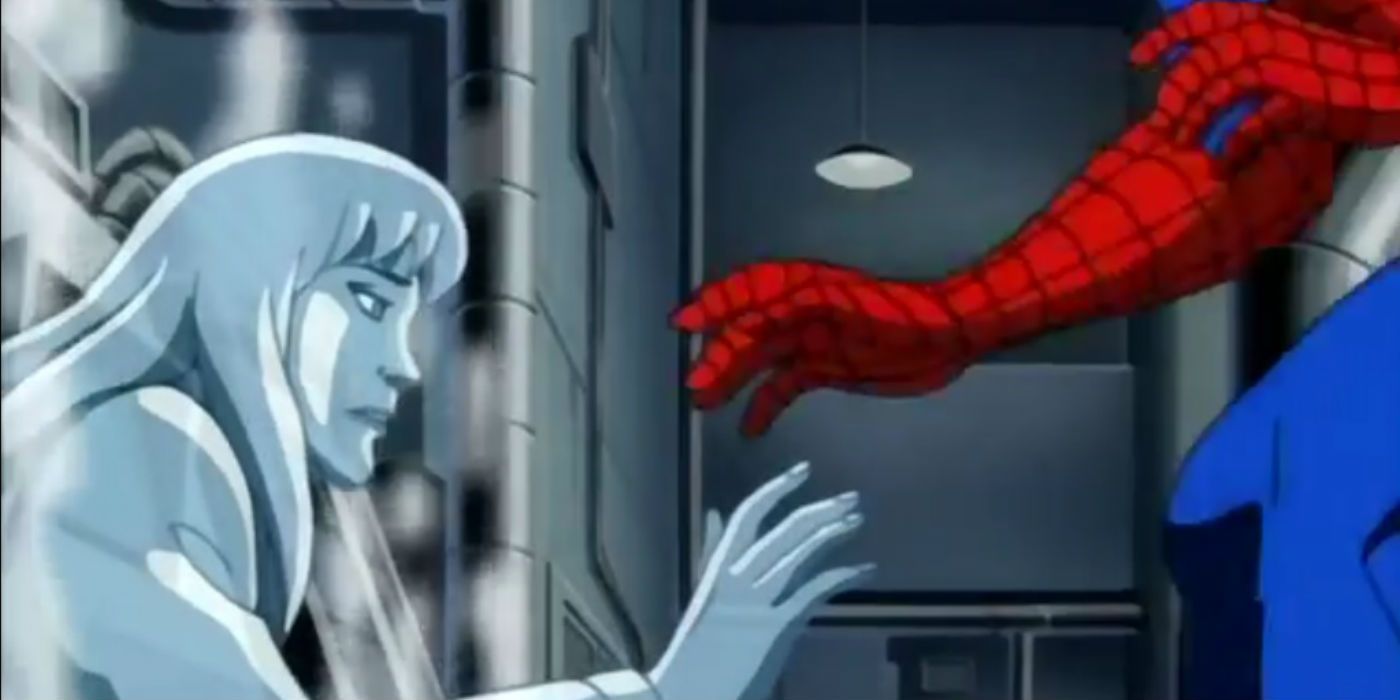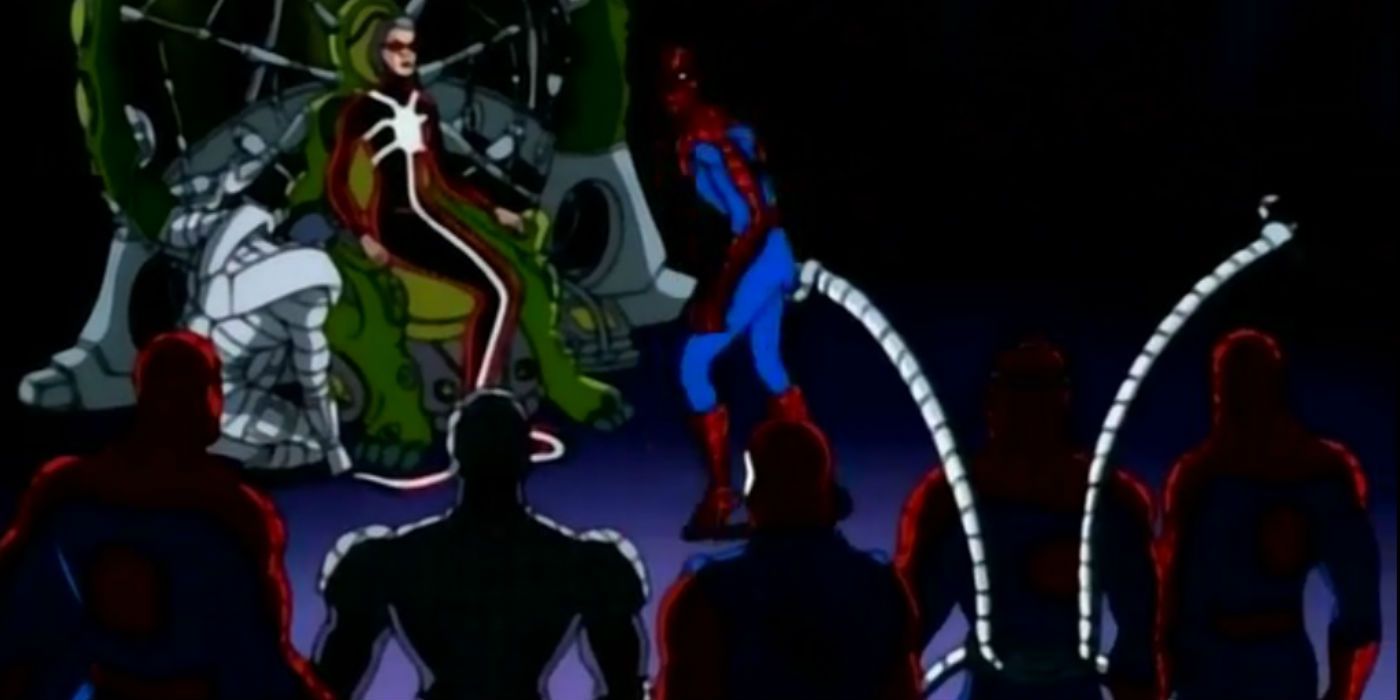Before "Ultimate Spider-Man," before "The Spectacular Spider-Man," before "Spider-Man: The New Animated Series," even before "Spider-Man Unlimited," there was the long-running and successful "Spider-Man: The Animated Series." Voiced by Christopher Daniel Barnes and written by John Semper, this classic animated cartoon of the '90s is arguably the most popular modern adaptation to date, and for very good reason.
RELATED: The 15 Best Episodes Of X-Men: The Animated Series
"Spider-Man" ran for five seasons for a total of 65 episodes, each of which showcased Peter's growth both as Spider-man and as a regular guy. He was smart, funny and written in a way that was faithful to the source material and showed him to be a great role model for kids; an element that has been fundamental to the character since he first appeared in "Amazing Fantasy" #15 in 1962. In the eyes of many fans, this series was THE Spider-Man show. With that in mind, let's take a trip down memory lane and see 15 episodes that helped make this animated series Spidey's best.
15 NIGHT OF THE LIZARD
Peter Parker doesn't have the easiest life, mostly because his time as a superhero often gets in the way of his social and academic life. His job as a freelance photographer barely sustains him, so although sceptical at first, you can imagine how incredible it is for Peter when J. Jonah Jameson offers a reward of $1000 for a picture of the Lizard: the monster that's been lurking beneath NYC. In the end, he gets that reward money and uses it to help his Aunt May.
As far as series pilot episodes go, "Night of the Lizard" (written by Stan Berkowitz and Gerry Conway) was one of the best. In 20 minutes, it established Spider-Man as witty, thoughtful and driven while setting up other complex characters like Curt Connors and Eddie Brock, both of whom would go on to feature in more dramatic, action-packed episodes. It also does a great job of letting us know what this Spider-Man would be about: setting a great example for kids.
14 MENACE OF MYSTERIO
The episode begins with a mysterious figure skulking around the metropolitan museum in the dead of night. As the security guards investigate, they discover that their intruder is none other than your friendly neighborhood Spider-Man, who webs up the guards and waves for the camera. Except, it's not Spider-Man, it's Mysterio, framing Spidey in the pursuit of revenge.
One of the great things about "Menace of Mysterio" (written by John Semper, Stan Berkowitz and Marv Wolfman), is how it gives Spider-Man / Peter Parker a chance to show just how dedicated he is to fighting the good fight, even if everyone else is against him. J. Jonah Jameson appears on TV for what he calls "Spider-Man's final humiliation," and while that's expected, we even see Aunt May express her dislike for the web-head. The citizens of New York agree with Aunt May, as we can see when Spidey climbs the Brooklyn Bridge to face Mysterio in front of a mob of people...w ho are cheering for the man with the fishbowl head! But Spidey being Spidey, he keeps going, persevering where others might have thrown in the towel; fighting not for adulation or acceptance, but because it's the right thing to do.
13 SINS OF THE FATHER
Many awesome characters were taken right out of the pages of the "Amazing Spider-Man" comics and given new life in the animated series with all the darkness and complexity they were originally given. "Venom Returns" (written by John Semper, Stan Berkowitz and Len Wein) introduces Cletus Kasady, whom you might know as the serial killer who would turn into Carnage. He lands right in the middle of a plot involving the demonic Dormammu, the romantic tragedy between Ashley Kafka and Eddie Brock, and Madame Web's lessons for Spider-Man.
Aside from giving us the memorable, epic battle between Carnage, Venom, Spidey, Iron Man and Baron Mordo, this exciting two-part episode is a perfect example of how the series could deal with themes as deep and heavy as death, self-worth and virtue while simultaneously tiptoeing around those strict censorship rules of the '90s. Cletus Kasady is still every bit as monstrous as his comic book counterpart, Eddie Brock's mental anguish is still as understandably intense and Spidey is still understandably hesitant to work with his nemesis. Despite being a kid's show, there was nothing childish about this episode.
12 FRAMED / MAN WITHOUT FEAR
When Peter Parker is framed by Richard Fisk for selling government secrets, his freedom falls in the hands of Daredevil. Matt Murdock fights for Parker in the court of law while his fearless alter ego fights alongside Spidey to ensure Kingpin's minions get their due. Thanks to Daredevil and Detective Lee, Parker's name is cleared; unfortunately, though, Wilson Fisk once again gets away.
It's an explosive two-part episode about greed, corruption and vengeance that partners Spider-Man with Daredevil, each with their own stake in this fight. Daredevil wants justice for his father while Spidey wants to be acquitted. The episode also shows us that even without superpowers, the Kingpin is a criminal force to be reckoned with, which is one reason why this episode is a turning point of sorts. Up until this episode, Spidey had been fighting the Kingpin while being fooled by Wilson Fisk's benevolent public presence. It's only after Daredevil reveals the truth that Parker understands just what it is he's been up against.
11 NEOGENIC NIGHTMARE
Throughout the second season, we see Spider-Man battling the growing effects of the spider bite he received so long ago. It was revealed that his body was changing and that it would continue to mutate into something monstrous. Fearing this, Spider-Man turned to the world's foremost expert on mutations -- Professor Charles Xavier -- in this crossover episode (written by John Semper, Michael Edens and J.M DeMatteis). Unfortunately, Xavier cannot help him since his isn't the same kind of mutation Xavier is experienced with. Despite this, Spidey finds himself involved in a fight against Landon's plot to eradicate mutants.
After finding himself caught up in the anti-mutant scheme, Spidey decides to help save them. It's not at all shocking that he would, but it is surprising to see how he dives into it without any clear sign of hesitation. It's not just an exciting crossover for fans of both the "X-Men" and "Spider-Man" series, it's a meaningful story for both. It's Spidey putting aside his pain and fighting for the good of others, as well as the X-Men showing the same kind of acceptance of others they crave from humanity.
10 BATTLE OF THE INSIDIOUS SIX
One of the Kingpin's attempts to defeat the formidable Spider-Man was to band some of his greatest enemies together: Doctor Octopus, Chameleon, Scorpion, Mysterio, Rhino and Shocker formed the Insidious Six. Unfortunately, this came at a time when Peter was discovering that his powers were starting to fail him, so he had to find another way to beat six superpowered villains simultaneously. Luckily, even if you take away his superpowers, Spidey still has his wit and spirit.
The two-part episode, written by John Semper, David Lee Miller and Doug Booth, takes away Spider-Man and shows us what Peter Parker is really made of. Everything is still on the line, including the wellbeing of his Aunt and his secret identity, and yet there's more of a risk. Despite all that, Parker is still able to keep his cool and work his way out of a literal bind by persuading the six that wearing the mask was all part of a ruse. Even without the wall-crawling and spider-sense, you'd lose a lot betting against him, and "The Insidious Six" shows you exactly why.
9 THE RETURN OF KRAVEN
Kraven was among the most fearsome fighters Spider-Man had ever encountered in the series. It was only his love for Mariah -- his Calypso -- that put an end to his serum-fuelled rampage the first time. "The Return of Kraven" (written by Meg McLaughlin) sees his return to the concrete jungle of NYC, breaking into a Hardy Foundation building to acquire his serum, leading Spidey to believe that he's back to being the hunter.
The animal-themed episode (with the appearance of Black Cat) shows us how Spider-Man has changed after losing Mary-Jane. Being a superhero is a heavy responsibility, which is exactly what he tries to explain to his new crime-fighting partner (sort of), Black Cat. The episode is also awesome because we don't get to see Kraven all that much outside of the comics, but his appearances in this series ensured that we got the most out of his character. He's a hunter, yes, but there's more to him than that. We find out that the only reason he wanted the serum was so he could rescue Mariah Crawford from the literal animal she had unintentionally become. When the animal is at bay, Kraven is actually quite a noble man.
8 DUEL OF THE HUNTERS
Kraven's humanity is especially clear in "Duel of the Hunters," when Spider-Man's nightmares come true and his mutations have finally turned him into a spider-like monster. On his tail (or rather, his spinnerets) are the Punisher and Kraven the Hunter, except Kraven is trying to save Spider-Man whereas the Punisher is just trying to rid the world of the web-head completely.
With Peter Parker unable to really give us his thoughts, the episode is able to focus on the show's side characters and we are shown the small relationships between others like Debra Whitman and Flash Thompson, who, as it turns out, isn't such a one-dimensional jerk after all. It's also noteworthy because of how it depicts Punisher in his crusade against monsters, quite a mature topic for a kid's show. Kraven and Mariah try to show him that all life has value and that victims aren't always as they appear, making his vengeance-driven "hunt" a foolish one. We're left with the wonderful sentiment that sometimes perceived monsters are just as much victims of the world's cruelty.
7 THE HAUNTING OF MARY-JANE WATSON
When Mysterio suddenly returns to steal recovered treasure from a pirate masquerade fundraiser, Spidey is quick to catch him and put him back in jail. Soon after, Mary-Jane discovers she landed the starring role in a film after the death of its former lead, Miranda Wilson. Things go awry and we find out that Miranda survived the explosion, and that Mysterio saved her and gave her a new body in the hope of giving her everything she'd lost.
"The Haunting of Mary-Jane Watson" (written by John Semper, Virginia Roth and Meg McLaughlin) is both outrageous and surprisingly deep. There really is more to Mysterio than smoke and mirrors. He genuinely cared about Miranda Wilson and while he could never return her beauty to her, he turned himself into a criminal just to bring her some sliver of hope to keep her going. But this episode is a huge turning point in more ways than one. Mysterio opts to meet his end with Miranda in the explosion and collapse of Wonder Studios and Spider-Man, partly inspired by Mysterio's actions and final sacrifice, finally reveals his identity to Mary-Jane.
6 THE RETURN OF THE GREEN GOBLIN
"The Return of the Green Goblin" (written by Mark Hoffmeier) was one of the darker episodes in the series and it's a great example of how, no matter what situation Spider-Man was thrown into, no matter how outrageous or heartbreaking, the writers could always keep him in character.
The episode sees Harry don the gaudy mask of the Green Goblin, haunted by his father, who's communicating with him from Limbo and driven mad by the revelation that Norman was the nightmarish villain. After battling Spider-M,an as well as the Punisher, Harry is subdued. However, instead of trying to punish him further, Spidey promises to help him. The episode ends with Spidey swinging across the city with Harry, taking him to get professional help. It's so easy to forget who someone is and judge them for the madness they might at times exhibit, but Spidey doesn't act on that judgement, which is definitely a quality we all need to keep in mind. Bad deeds are sometimes committed by good people.
5 TURNING POINT
Green Goblin's entire storyline was relatively dark and took a lot of inspiration from its comic book counterpart. The episode "Turning Point" (written by John Semper, James Krieg, Robert N. Skir and Marty Isenberg) borrows plot points from the iconic "Amazing Spider-Man" story arc, "The Night Gwen Stacy Died." Upon discovering Spider-Man's secret identity, Green Goblin kidnaps MJ. As Spidey and the Goblin fight atop George Washington Bridge, Mary-Jane falls, seemingly lost forever in Limbo.
True to its title, the series changes after this point, beginning with the episode's ending where we see Spider-Man really struggle for the first time to do the right thing. It's a powerful moment for him when he fights the compulsion to take vengeance on the Green Goblin and attempt to save the man who stole Mary-Jane away from him. It makes for a memorable ending to an episode that had us all on the edge of our seats.
4 SECRET WARS I-III
Immediately after witnessing the tragic demise of Mary-Jane, just after finding out that she was a clone (long story), Spider-Man is whisked away from his dimension by Madame Web for an experiment so she may prove to the Beyonder that Spidey is in fact the one they need for the battle ahead. In an effort to find out for himself which is stronger, good or evil, the Beyonder unleashes a few of Earth's most villainous characters upon an unsuspecting paradise planet; these baddies include Doctor Octopus, Dr. Doom, Alistair Smythe, The Lizard and the Red Skull. Spidey is left to assemble his own team from any of the heroes available and restore the planet.
Throughout the epic three-part "Secret Wars" (written by John Semper Jr. and many others) arc, Spidey manages to unite a whole host of heroes who initially bicker among themselves, unable to properly cooperate and trust each other. That's what makes this story-arc so memorable. There are few things more exciting than seeing a group of your favorite superheroes tackle your favorite supervillains. It's an exciting break from the tragedy that preceded it and a perfectly colorful penultimate story-arc that elegantly leads into the finale.
3 THE ALIEN COSTUME I-III
This three-part episode was a favorite for many a "Spider-Man: The Animated Series" fan because it introduced Venom to the series. This particular story arc had been building up from the beginning, starting with Eddie Brock's humiliation at the doorstep of a completely normal Curt Connors, and ending with Brock's failed attempt at getting his job back. It all culminated in his intense hatred of Spider-Man, feelings that he and the scorned symbiote now shared.
Venom is the kind of villain that deserves a huge introduction and "The Alien Costume" story arc doesn't fail to deliver. Before we're shown one of Spider-Man's most memorable foes, we're shown what it can do and how drastically it turned Peter Parker from the compassionate man to a reckless menace drunk on power. With the exception of the suit's actual origins, the arc stays pretty faithful to the comics, which means Eddie Brock's tortured soul really shines through. As much as we love Spidey, we can partly understand how Eddie could come to hate him so much.
2 THE RETURN OF HYDRO-MAN I-II
Hydro-Man, as depicted in the series, is a creepy guy even without his water-based powers. He's obsessed with MJ and just can't seem to take a hint, even after she defeated him by ensuring he evaporated the first time around. His return, while providing yet another thrilling chase through the pipelines of New York, results in the most heart-wrenching moment in the series. Instead of miraculously returning to life, it was revealed that MJ was simply a clone created by Hydro-Man's powers.
It was an emotional roller coaster unlike any other in the series. What appears to be an exciting plot twist with Mary-Jane's apparent new powers, turns out to be a symptom of something horrible. The most memorable moment is her death scene, in which her body turns into water, then vapor in Spider-Man's arms, but not before she tearfully lets Spidey know one last time just how much MJ loves him. There are few other episodes in the series capable of conveying that much tragedy in such a short amount of time.
1 SPIDER-WARS I-II
After the "Secret Wars" story arc, Spider-man is once again thrown into a different dimension, one where New York has become a dystopian city under threat by the deranged Spider-Carnage, a version of Peter Parker that bonded to the Carnage symbiote after already having been driven mad by the existence of his clone, Ben Reilly (a story Peter remarks sounds like a bad comic book plot... wink, wink).
The best thing about the two-part "Spider-Wars" finale (written by John Semper Jr., Mark Hoffmeier and James Krieg), aside from the action and Stan Lee cameo, is how it shows Spidey overcoming the worst of the world with the best in him. We've seen him develop his qualities over the course of the series with the help of Madame Web and it's amazing to see how it all fit together. Everything he's learned and done clearly distinguishes him from his counterparts and gives us something more to admire in him as a heroic figure. In a more symbolic way, we can see that everything he's shown us can be used, not just when facing the world and everything it might throw at us, but in the struggles we might face against ourselves.
What was your favorite episode of this landmark '90s cultural touchstone? Let us know in the comments!

